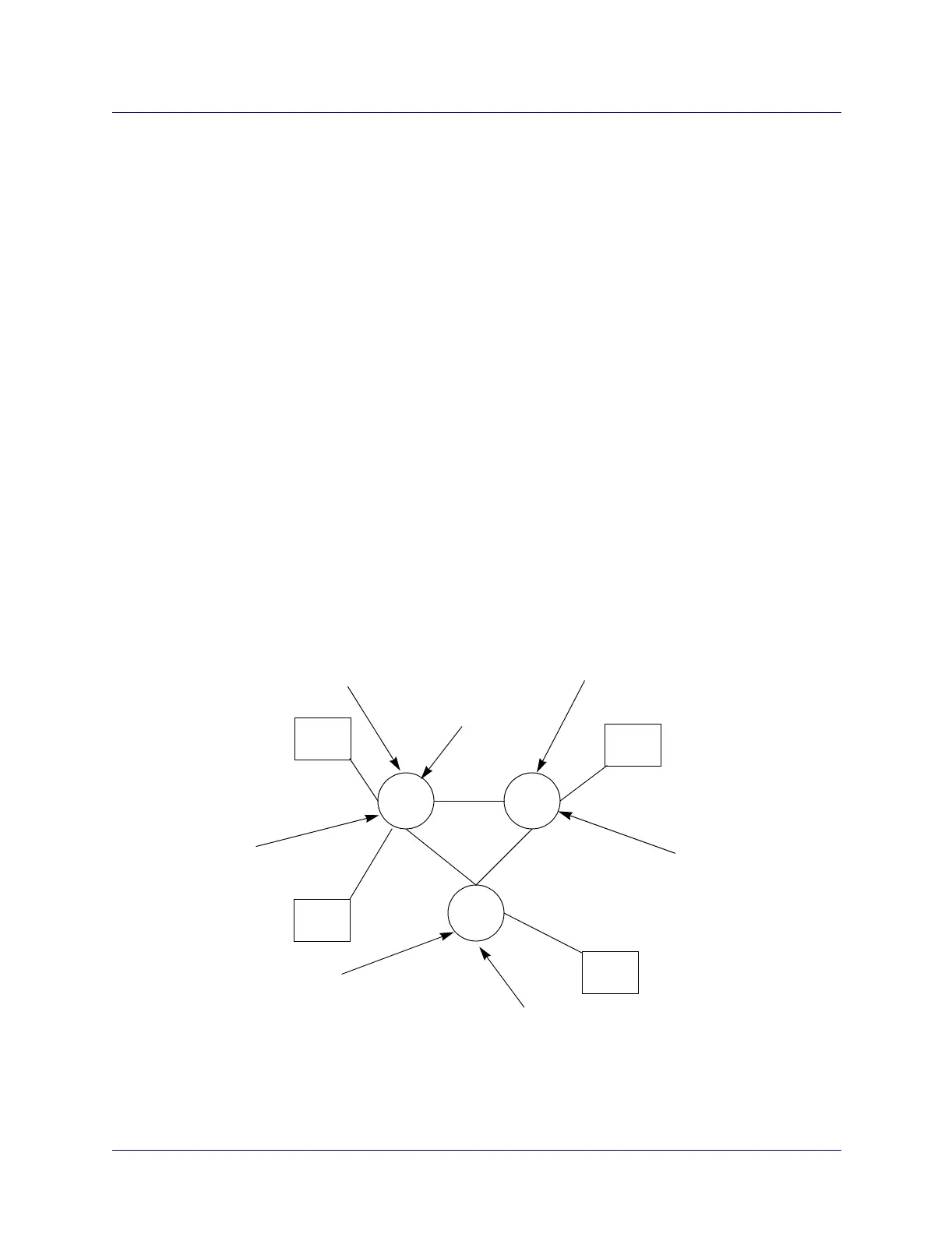Beta Draft Confidential
OSPF Name Aggregation
Network Hierarchical Addressing Plans
ATM Services Configuration Guide for CBX 3500, CBX 500, GX 550, and B-STDX 9000 1/19/05G-5
Network Hierarchical Addressing Plans
Using OSPF name aggregation in conjunction with a network hierarchical addressing
plan can reduce memory consumption by minimizing the number of OSPF names
required for provisioning addresses. This section summarizes some important
hierarchical addressing concepts used in both voice and data networks and relates the
concepts to OSPF name aggregation.
Standards for planning voice switch networks are in place to ensure that each town in
the United States has at least one unique area code and local exchange code
combination. For example, Westford, MA uses the 978-692 combination. If a different
town in the country used the same area code and local exchange code, the voice switch
network could route calls to the wrong place.
The need for similar standards exists when planning data networks that use SVCs. For
example, referring to the sample network scenario shown in Figure G-1, suppose that
addresses for both CPE at UNI#1-1 and CPE at UNI#3 started with 978555. You could
provision each unique address in the network, which would route the calls correctly.
However, this solution would result in a separate OSPF name entry for each address,
which would cause significant memory consumption throughout the network.
Figure G-2 enhances the network scenario in Figure G-1 to show a hierarchical
addressing plan that uses the E.164 public network addressing standard. (Any
addressing standard would work the same way.)
Figure G-2. Sample Network Showing Port and Node Prefixes
CPE
CPE
CPE
CPE
Addresses =
9785551000...9785559999
Addresses =
9786661000...9786669999
UNI#1-2
UNI#2-1
UNI#3-1
Addresses =
5085551000...5085559999
Addresses =
6175551000...6175559999
UNI#1-1
Port Prefix 978555
Node Prefix 978
Port Prefix 978666
Node Prefix 508
Port Prefix 617555
Node Prefix 617
Port Prefix 508555
Switch
#2
Switch
#1
Switch
#3
